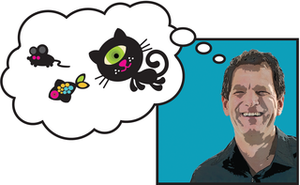Math, Music, and Cat Toys
Joe Casad
Welcome to Raspberry Pi Geek – the first and only print magazine dedicated to the amazing Raspberry Pi mini-PC and the open hardware revolution. We ring in the new and old in this issue. (Actually, nothing is really very old with the Raspberry Pi, but we follow up on some previous themes, including a report on how it went for the wind-turbine-powered Raspberry Pi we described last time.)
Welcome to Raspberry Pi Geek – the first and only print magazine dedicated to the amazing Raspberry Pi mini-PC and the open hardware revolution. We ring in the new and old in this issue. (Actually, nothing is really very old with the Raspberry Pi, but we follow up on some previous themes, including a report on how it went for the wind-turbine-powered Raspberry Pi we described last time.)
Editing a magazine on Raspberry Pi is always exhilarating because the world of the Raspberry Pi is evolving at such a rapid rate. One exciting recent development for the Raspberry Pi was the announcement from Wolfram computing of a special Pi-based version of the powerful Wolfram Mathematica computational software. Mathematica is easy and intuitive enough for beginners, yet sophisticated enough to be a favorite tool for mathematicians and scientists around the world. In this issue, we delve into Mathematica on the Pi. Another exciting Pi announcement is the arrival of the Raspberry Pi Compute Module – a specialized version of the Raspberry Pi designed for circuit board designers and embedded systems professionals. We talk to Raspberry Pi hardware director James Adams about the appearance of the Compute Module and what it means for the Raspberry Pi community.
Elsewhere inside, we continue our tradition of great, hands-on projects that put the Pi to work in practical, real-world solutions. You'll learn about Raspberry Pi as a tool for home automation. We'll also try the Pi as the brain behind an ingenious solution for launching cat toys. We'll use the Pi to monitor sensors and gadgets in a race car, and we'll show you how to add a real-time clock chip to your Raspberry Pi configuration. We also build a cool music player for preschool kids, and we take a spin with turtle graphics in the kid-friendly Scratch programming language.
[...]
Use Express-Checkout link below to read the full article (PDF).







